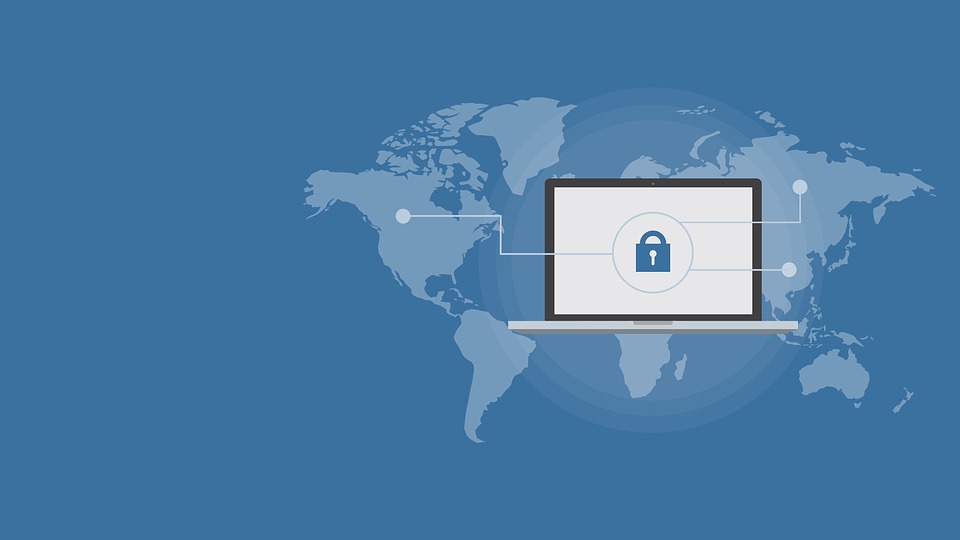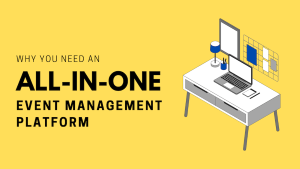
With devices, applications and internet connectivity multiplying year on year, it is no surprise that the risks associated with cyber security too are on the rise. While every enterprise working in any industry needs to focus on strengthening their digital security, event management is no different. Especially since it involves data from sensitive sources such as event sponsors, event attendees and the enterprise itself, a well-rounded cyber security framework is necessary.
Additionally, damage in case of data and cyber slippages are nothing but heavy. The damage in terms of monetary cost a business suffers due to a malware attack is estimated at an average of 2.4 million2 , aside of reputation risk and further losses. Which is why, creating a sound cyber security framework in event management is paramount. Here’s how you can achieve that.
☑ Create A Comprehensive Cyber Security Strategy
As an organization, the primary and foremost process in the direction of cyber security is to chalk out a comprehensive cyber security strategy. While this should be an enterprise-wide exercise, it should be reiterated and customized at the start of any initiative such as an event. Some facets of this strategy can include:
- ☑ Classification of data in terms of criticality
- ☑ Creating safety mechanisms complementing your data classification
- ☑ Educating and empowering your event teams on the relevance of cyber security
- ☑ Appointing a data security champion to lead the entire exercise and constantly review data security frameworks with every event team
- ☑ Staying abreast with upgrades in technology, operating systems and newer trends in data theft
- ☑ Instill the practice of immediate same-day back-up of any and all relevant data
- ☑ Invest in multi-factor authentication the include various levels of authentication such as a PIN, passphrase and biometrics among others
☑ Keep Your Operating Software Updated
A trend observed in cyber security crimes indicate that most number of data thefts and crimes occur when the target system is an outdated operating system2. All operating system updates are rolled out for a reason – to patch up any vulnerabilities in the platform, may it be operational or security. Hence, ensure your entire event team uses systems with updated versions of their respective operating systems. Additionally, your central collated database should also be on a system that is consistently updated.
☑ Invest In Next-Gen Firewalls
Next-gen firewalls adopt the mechanisms of traditional firewalls and blend in modern technological advancements such as intrusion prevention, deep packet inspection, application control and advanced malware systems among others. Next-gen firewalls set in place comprehensive cyber security mechanisms at the port level, the application level as well as the protocol level ensuring a well-rounded security system.
☑ Leverage The Benefits of Data Encryption
Data is lost or mishandled either on your host systems, on your vendor’s systems, or in transit during communication and transfer between the two. While the first two threats can be managed through a host of measures discussed herein, ensuring data safety in transit can be done effectively by data encryption. Should your data be stolen in transit, it is rendered useless in the hands of the cyber criminal as it is encrypted. You should encrypt attendee data, employee information, budgets and all other relevant information. Most modern operating systems come with in-built encryption software.
☑ Invest in a SIEM Solution
This idea may be slightly far-fetched for smaller organizations but it is an absolutely essential investment for the larger firms in today’s day and age. SIEM, or security information and event management, is a set of software that combine and analyze data from to throw up trends and indications on application behavior, performance and cyber health. It also shows how the user handles and engages with the device. All these data points throw up trends on potential risks and gaps in application and system security.
☑ Strengthen Device Management Protocols
In today’s time of Internet of Things and constantly being connected to the world wide web, all employees carry a risk of shadow IT where they download applications and engage with online interfaces that may pose a risk to the data on their systems. You need to create strong device management protocols that block or bar any external sites and rollout an application whitelist allowing only those applications to be installed and run, thereby keeping their work systems in safety. Additionally, physical device management is also necessary. Many a times, devices are left unattended which can cause a serious risk to company data and device safety.
☑ Fall Back On a Comprehensive Recovery Mechanism
It is always wise to prepare for contingencies. Hence, no matter how comprehensive your data management systems and cyber security may be, do factor in a safety nets that captures any slipped or accidentally deleted data. Establish a cycle for data back-up and regularly test recovery systems to ensure they are functional and optimal.
☑ Vet Third-Party Risks From Vendors
Many a time, data thefts or security risks arise out of contractual flaws or cyber security slippages from your vendor firms. For example, if you have outsourced your event ticketing system to a third party vendor, comprehensively vet the agreement to safeguard your data security concerns. Similarly, discuss with them their cyber security mechanisms and run it through your tech team before engaging their services.
Ensure to consistently revisit and strengthen your cyber security and data management systems as a periodic exercise and stay abreast with technological advancements in this space to be a step ahead of cyber-attacks.
Sources:
https://www.varonis.com/blog/cybersecurity-statistics/
https://www.tresorit.com/blog/privacy-awareness-smb-teamwork/
https://www.rutter-net.com/blog/10-cybersecurity-essentials-for-businesses





